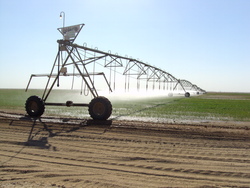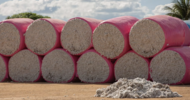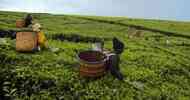I have just returned form a research trip to Sudan, during which I had the chance to interview a number of Sudanese decision makers and visit agricultural projects of Gulf countries.
Based on newspapers, grey literature and interviews in the Gulf region I argue in the Brown Journal of World Affairs that there is a gap between the announcements of Gulf agro investments and their actual implementation.This argument could be corroborated in Sudan. Gulf countries only engage reluctantly in the country.
Fears of political unrest,volatile investment regulations and problematic governance are widespread. The ‘agricultural renaissance’ (al nahda al zira’iyya) that the Sudanese government envisaged in 2008 has not taken place so far. By 2011 self-sufficiency in wheat was promised, but it continues to linger around 30 percent for example.
As production increases in the center have found wanting the regime is touting a plan to use water from the West Nubian Sandstone aquifer, in order to cultivate wheat in the Northern desert. A plan that is eerily reminiscent of the failed Saudi wheat program that has relied on an unsustainable use of fossil water.
Most Gulf projects focus on the Northern area around Abu Hamad and Berber, where Nile water is pumped uphill in order to irrigate wheat fields on relatively poor soils. As land around the riverain areas is limited the regime has advertised cultivation of desert land, but has oversold available land for irrigation. This has led to disappointments.One Gulf investor saw his project size diminish from 70,000 feddans to only 4,000 feddans.

Entrance of the Zayed Al Khair Project south of Khartoum
Existing projects have faced various challenges.The Zayed al Khair project (see photo) at Wad Rawah about 100 km south of Khartoum has been around for 10 years. Yet it only plants 3000 feddans on an overall project size of 40,000 feddans, down from about 15,000 feddans during better times.
The limited activity can be clearly seen on the Google Earth snapshot below. The cultivation of wheat and sorghum has not proven to be profitable and the management is trying its luck with rice now. Water is pumped from the Nile, but an increase in acreage would require additional pumps and canals.
Similarly, a project of the Al Rajhi group near Berber only cultivates a fraction of its total project size of 25k feddans. A project by UAE based Al Zafra in the rainfed areas 140km south of Gedaref has been given up completely after only one year of cultivation in 2008/2009. The Syrian management alienated local workers with their paternalistic style, the soils were poor and exhausted and lack of roads made access impossible during the rainy season.On some projects considerable conflicts with previous customary land rights holders exist and management complains about sabotage. On another project early protests faded as former customary land rights holders are paid an annual rent and have been given land on a sugar project nearby. The employment effect is limited in all cases, as production is capital intensive and foreign labor is imported from Egypt or the Philippines. Sudanese workers are seen as lacking the skills needed for mechanized production and specific procedures like land leveling and rice refining.
Pumped Nile water in a canal on the plateau above the river
















